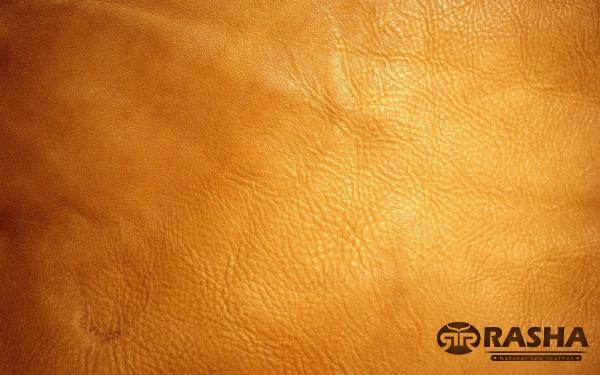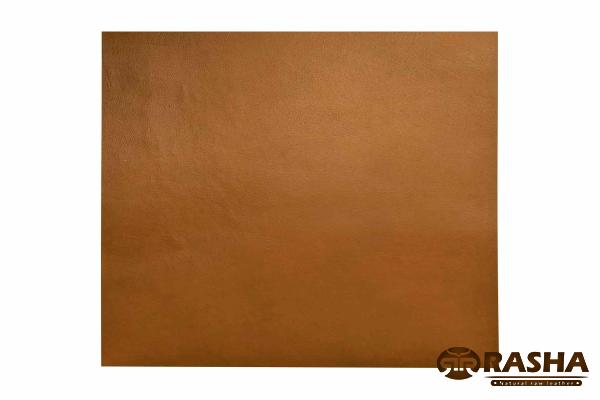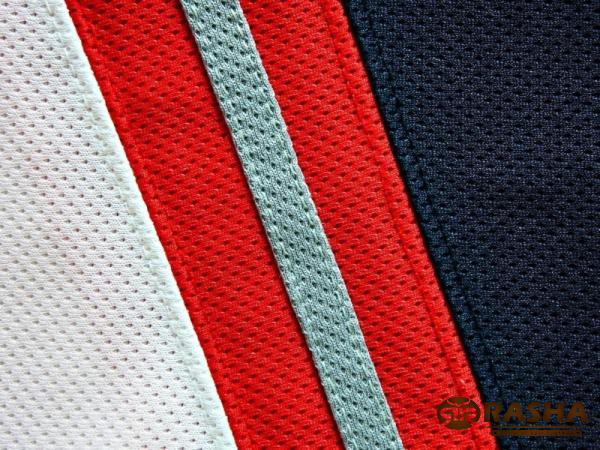Large leather hides play a vital role in various industries, including fashion, furniture, automotive, and interior design. These versatile and durable materials offer a wide range of applications and aesthetics, making them highly sought after by businesses and consumers alike. This article provides a comprehensive overview of large leather hides, exploring their characteristics, sources, and uses. 1. Characteristics of Large Leather Hides: A. Size and Dimensions: Large leather hides typically refer to hides that exceed standard sizes. While size can vary, most large hides range between 40 to 70 square feet. These expansive dimensions make them suitable for creating substantial and visually appealing products. B. Quality and Durability: Large leather hides are acclaimed for their exceptional quality and durability.
leather
 Their size ensures minimal wastage during production, making them more cost-effective than smaller hides. Additionally, large hides often possess fewer natural imperfections, enhancing their visual appeal and overall quality. C. Varieties and Finishes: Large leather hides come in a wide assortment of varieties and finishes, including full-grain, top-grain, corrected-grain, and bonded leather. Each type offers unique characteristics and aesthetics, allowing for a diverse range of applications in different industries. 2. Sources of Large Leather Hides: A. Animal Sources: Leather hides originate from various animals, with cattle hides being the most common and widely available. Other sources include buffalo, deer, sheep, goat, and exotic animals like crocodile, ostrich, and snake. The choice of animal impacts the texture, strength, and appearance of the leather. B. Tanning Process: The tanning process is crucial in transforming raw hides into pliable and usable leather. Tanneries employ various techniques, including vegetable tanning, chrome tanning, and combination tanning, to achieve desired characteristics such as softness, flexibility, and resistance to moisture.
Their size ensures minimal wastage during production, making them more cost-effective than smaller hides. Additionally, large hides often possess fewer natural imperfections, enhancing their visual appeal and overall quality. C. Varieties and Finishes: Large leather hides come in a wide assortment of varieties and finishes, including full-grain, top-grain, corrected-grain, and bonded leather. Each type offers unique characteristics and aesthetics, allowing for a diverse range of applications in different industries. 2. Sources of Large Leather Hides: A. Animal Sources: Leather hides originate from various animals, with cattle hides being the most common and widely available. Other sources include buffalo, deer, sheep, goat, and exotic animals like crocodile, ostrich, and snake. The choice of animal impacts the texture, strength, and appearance of the leather. B. Tanning Process: The tanning process is crucial in transforming raw hides into pliable and usable leather. Tanneries employ various techniques, including vegetable tanning, chrome tanning, and combination tanning, to achieve desired characteristics such as softness, flexibility, and resistance to moisture.
Specifications of leather
 C. Sustainability Considerations: Environmental concerns associated with leather production have prompted the industry to focus on sustainable practices. Some tanneries employ eco-friendly methods, utilizing vegetable-based tanning agents and reducing water and energy consumption. Additionally, the recycling and repurposing of large leather hides contribute to reducing waste and carbon footprint. 3. Applications of Large Leather Hides: A. Fashion and Accessories: The fashion industry extensively utilizes large leather hides in the creation of luxury handbags, shoes, belts, and garments. The durability, versatility, and natural beauty of leather make it an appealing choice for designers and consumers seeking timeless elegance and enduring quality. B. Furniture and Interior Design: Large leather hides are widely employed in the manufacturing of furniture, providing a luxurious and durable upholstery option. Leather sofas, armchairs, and ottomans are sought after for their comfort, aesthetic appeal, and ease of maintenance. Additionally, leather can be utilized in interior design for wall coverings, headboards, and decorative accents. C. Automotive Industry: The automotive sector utilizes large leather hides for luxurious car interiors. Leather upholstery conveys a sense of sophistication and premium quality, enhancing the interior ambiance and adding value to the vehicle. Leather steering wheels, gear shift covers, and door panels are common applications in the automotive industry.
C. Sustainability Considerations: Environmental concerns associated with leather production have prompted the industry to focus on sustainable practices. Some tanneries employ eco-friendly methods, utilizing vegetable-based tanning agents and reducing water and energy consumption. Additionally, the recycling and repurposing of large leather hides contribute to reducing waste and carbon footprint. 3. Applications of Large Leather Hides: A. Fashion and Accessories: The fashion industry extensively utilizes large leather hides in the creation of luxury handbags, shoes, belts, and garments. The durability, versatility, and natural beauty of leather make it an appealing choice for designers and consumers seeking timeless elegance and enduring quality. B. Furniture and Interior Design: Large leather hides are widely employed in the manufacturing of furniture, providing a luxurious and durable upholstery option. Leather sofas, armchairs, and ottomans are sought after for their comfort, aesthetic appeal, and ease of maintenance. Additionally, leather can be utilized in interior design for wall coverings, headboards, and decorative accents. C. Automotive Industry: The automotive sector utilizes large leather hides for luxurious car interiors. Leather upholstery conveys a sense of sophistication and premium quality, enhancing the interior ambiance and adding value to the vehicle. Leather steering wheels, gear shift covers, and door panels are common applications in the automotive industry.
buy leather
 D. Industrial and Technical Use: In addition to fashion, furniture, and automotive applications, large leather hides find application in diverse industries such as aviation, hospitality, and sports equipment manufacturing. The robust nature of leather provides resistance to wear and tear, making it suitable for items such as luggage, aircraft seating, and sports gear. 4. Trends and Innovations in the Large Leather Hide Industry: A. Sustainable Leather Alternatives: With growing concerns over the ethical and environmental impact of using animal-derived hides, the market has witnessed innovative developments in sustainable leather alternatives. These alternatives, including plant-based, lab-grown, and recycled leather, cater to conscious consumers seeking cruelty-free and eco-friendly options. B. Customization and Personalization: Advancements in technology have enabled the customization and personalization of large leather hides. Techniques such as embossing, laser cutting, and digital printing offer endless possibilities for creating unique textures, patterns, and designs, catering to the individual preferences and creative visions of designers and consumers. C. Collaboration with Designers and Artisans: Large leather hide manufacturers are increasingly collaborating with renowned designers and artisans to create exclusive collections that showcase the beauty and potential of leather. These partnerships promote innovation, craftsmanship, and cultural diversity, adding value to the industry and elevating the perception of leather as a luxury material. Conclusion: Large leather hides offer a myriad of possibilities for businesses and consumers across industries. With their significant dimensions, exceptional quality, and versatile applications, these hides have solidified their position as a favored material in fashion, furniture, automotive, and interior design. By understanding the characteristics, sources, and applications of large leather hides, businesses can harness the potential of these materials while embracing sustainability and innovation.
D. Industrial and Technical Use: In addition to fashion, furniture, and automotive applications, large leather hides find application in diverse industries such as aviation, hospitality, and sports equipment manufacturing. The robust nature of leather provides resistance to wear and tear, making it suitable for items such as luggage, aircraft seating, and sports gear. 4. Trends and Innovations in the Large Leather Hide Industry: A. Sustainable Leather Alternatives: With growing concerns over the ethical and environmental impact of using animal-derived hides, the market has witnessed innovative developments in sustainable leather alternatives. These alternatives, including plant-based, lab-grown, and recycled leather, cater to conscious consumers seeking cruelty-free and eco-friendly options. B. Customization and Personalization: Advancements in technology have enabled the customization and personalization of large leather hides. Techniques such as embossing, laser cutting, and digital printing offer endless possibilities for creating unique textures, patterns, and designs, catering to the individual preferences and creative visions of designers and consumers. C. Collaboration with Designers and Artisans: Large leather hide manufacturers are increasingly collaborating with renowned designers and artisans to create exclusive collections that showcase the beauty and potential of leather. These partnerships promote innovation, craftsmanship, and cultural diversity, adding value to the industry and elevating the perception of leather as a luxury material. Conclusion: Large leather hides offer a myriad of possibilities for businesses and consumers across industries. With their significant dimensions, exceptional quality, and versatile applications, these hides have solidified their position as a favored material in fashion, furniture, automotive, and interior design. By understanding the characteristics, sources, and applications of large leather hides, businesses can harness the potential of these materials while embracing sustainability and innovation.










Your comment submitted.